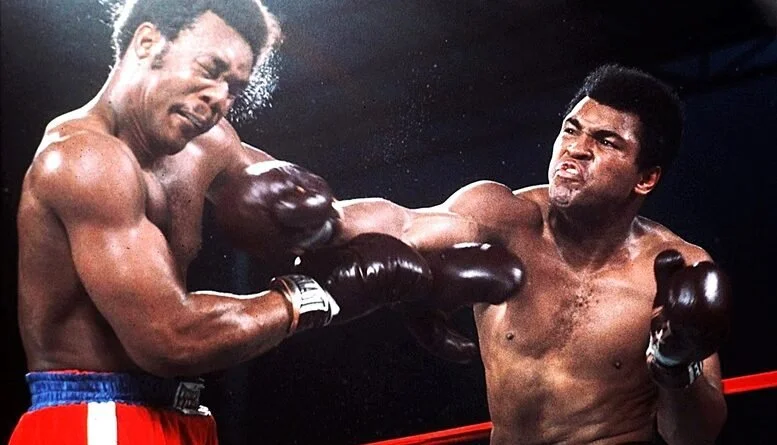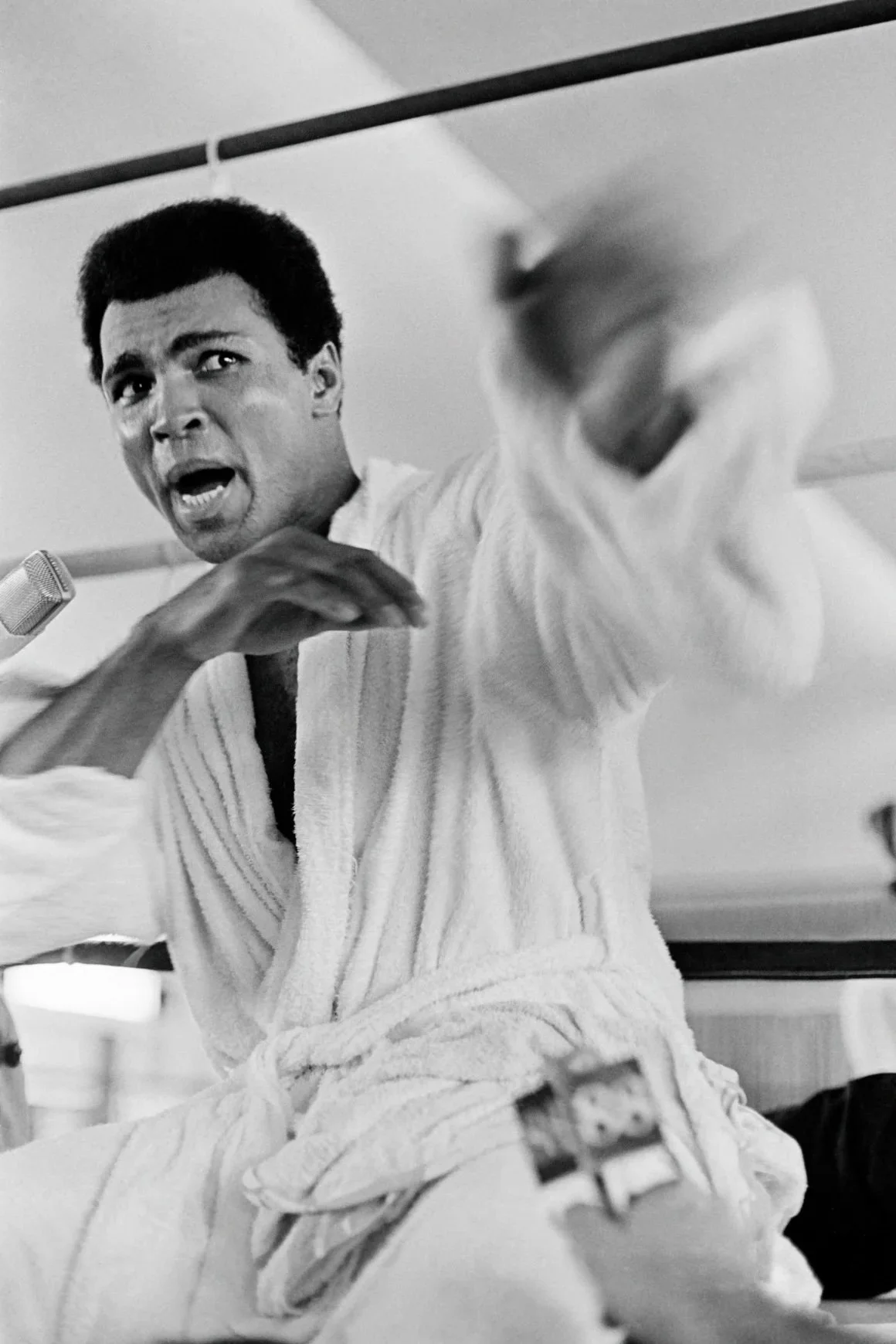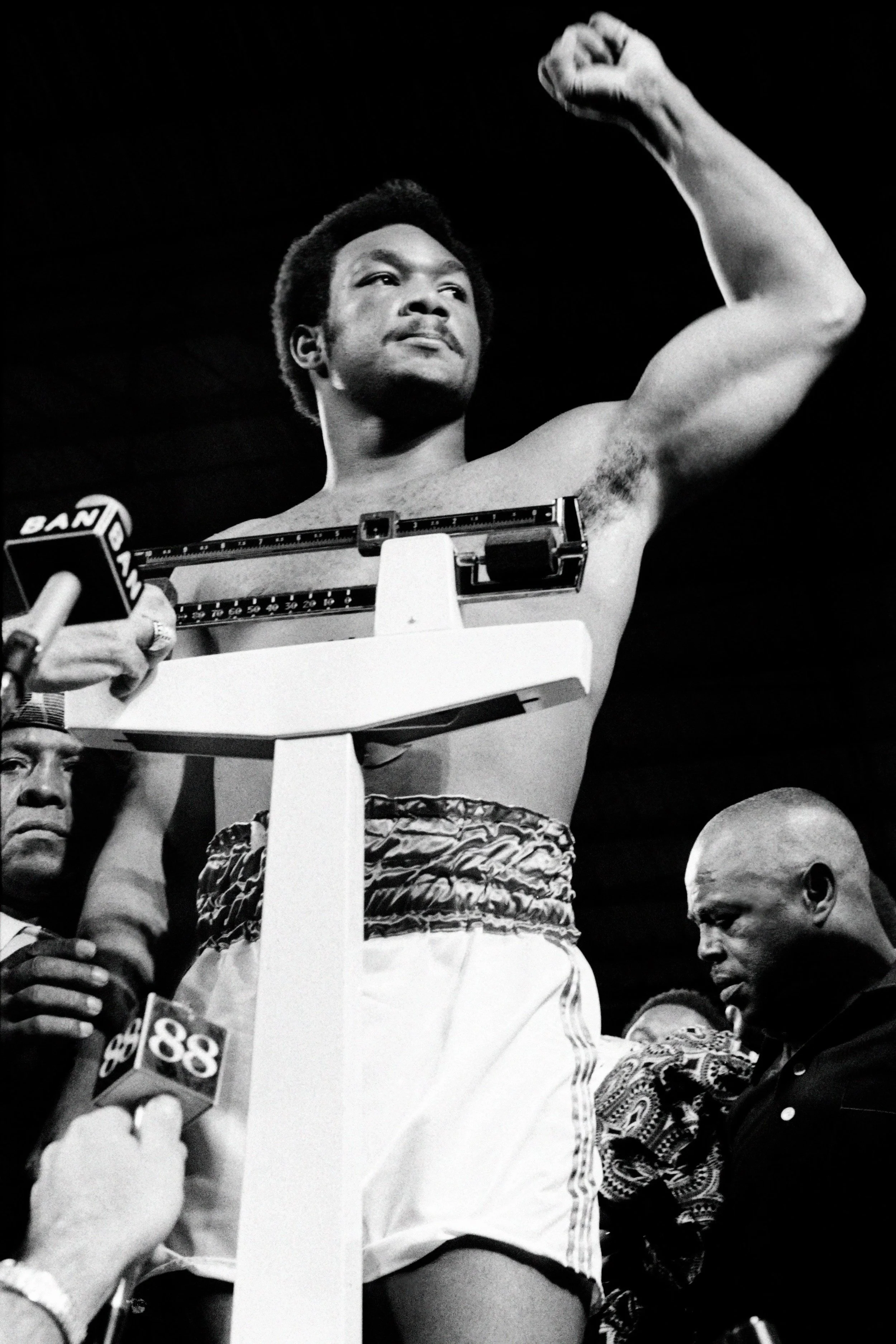The Rumble in the Jungle
The Rumble in the Jungle, the epic clash between Muhammad Ali and George Foreman on 30 October 1974, is undisputedly one of the greatest sporting moments of all time. The historic heavyweight bout, which took place in Kinshasa, then the capital of Zaire, was watched by an estimated billion people around the world. The lead-up, the main characters, and the backdrop are nothing short of a Hollywood blockbuster.
George Foreman (right), Ali (left)
Before the Rumble in the Jungle
Before the Rumble in the Jungle, Muhammad Ali's career was at a pivotal moment. Having been stripped of his heavyweight title and banned from boxing from 1967 to 1970 for refusing to serve in the Vietnam War, declaring himself a conscientious objector, Ali made a comeback starting in 1970. By 1971, he fought in the famous “Fight of the Century” against Joe Frazier but lost by unanimous decision. Over the next few years, Ali won 13 of 14 fights, avenging his loss to Frazier and overcoming Ken Norton, setting the stage for his challenge against the undefeated heavyweight champion George Foreman in the Rumble in the Jungle. Ali went into the fight at age 32 as a 4-1 underdog.
George Foreman, by contrast, was a dominant and intimidating force. Foreman had won Olympic gold in 1968 and then turned professional. At 25 years old and undefeated with a 40-0 record that included 37 knockouts, Foreman had decisively beaten both Frazier and Norton, who had previously given Ali tough bouts. He was seen as the strongest puncher in heavyweight boxing at the time, a formidable obstacle for Ali.
The Promoter: Don King
King worked initially as a street hustler and club promoter. He was a larger-than-life personality with a signature look and a promotional savvyness that helped him gradually rise in the boxing world despite a criminal past that included a conviction and prison time for manslaughter in the early 1960s. After his release, King focused entirely. He convinced Muhammad Ali to fight in charity events and on boxing promoting fights in local clubs before taking on the historic Ali vs. Foreman bout.
Don King (right), James Brown (centre) and Ali (left) in Zaire
Why Zaire?
Zaire came to host the Rumble in the Jungle when boxing promoter Don King sought unprecedented purses for both fighters, but lacked the funds himself. King promised $5 million to each fighter, a record sum in boxing, then searched globally for a backer able and willing to finance the fight. President Mobutu Sese Seko, eager to put Zaire on the world stage and promote African unity and pride, seized the opportunity and offered the massive financial backing required on the condition that the bout take place in Kinshasa’s May 20 Stadium.
Mobutu also funded the Zaire 74 music festival, a three-day event held in Kinshasa in September 1974, designed to promote and buzz around the upcoming Rumble in the Jungle boxing match. Conceived and organised by South African trumpeter Hugh Masekela and American music producer Stewart Levine, the festival brought together a remarkable mix of African and African American musicians, including James Brown, B.B. King, Miriam Makeba, Franco, and Tabu Ley Rochereau. Although originally scheduled to coincide directly with the fight, the boxing match was postponed, but the festival went ahead as planned, becoming a historic event in its own right.
The Fight: Ali vs Foreman
The fight took place on October 30, 1974, in the packed 20th of May Stadium. Muhammad Ali, branded the underdog against the fearsome and undefeated George Foreman, unveiled a masterstroke of strategy that instantly became part of boxing lore. Ali famously leaned back against the ropes, inviting Foreman’s barrage of thunderous punches in a tactic now known as the "rope-a-dope." This seemingly reckless gambit was a brilliant ploy: Ali conserved his energy and let Foreman exhaust himself. The crowd's chant of "Ali boma ye," meaning "Kill him, Ali," played a supporting role to this electrifying night and boosted Ali’s belief. As Foreman’s blows fatigued him, Ali’s sharp mind and quick fists turned the tide in the eighth round, landing a clean right hook that sent Foreman crashing to the canvas. Ali’s dramatic knockout victory had the world stunned.
It is estimated that up to one billion people worldwide tuned in to watch the Rumble in the Jungle live on television, making it one of the most-watched sporting events of its time. This massive audience included pay-per-view, closed-circuit broadcasts, and free television viewers across many countries.
Ali
Foreman
Boxing Icons
Muhammad Ali continued boxing after the Rumble in the Jungle, eventually becoming the first three-time heavyweight champion before retiring in 1981 with a record of 56 wins and 5 losses. He remained an activist and a charismatic presence that the world adored.
George Foreman took the loss hard but was gracious in defeat. He took time away from the spotlight and sport to make a remarkable comeback in the late 1980s. Regaining the heavyweight title in 1994 at age 45, becoming the oldest heavyweight champion in history, and later built a successful business career outside the ring.





